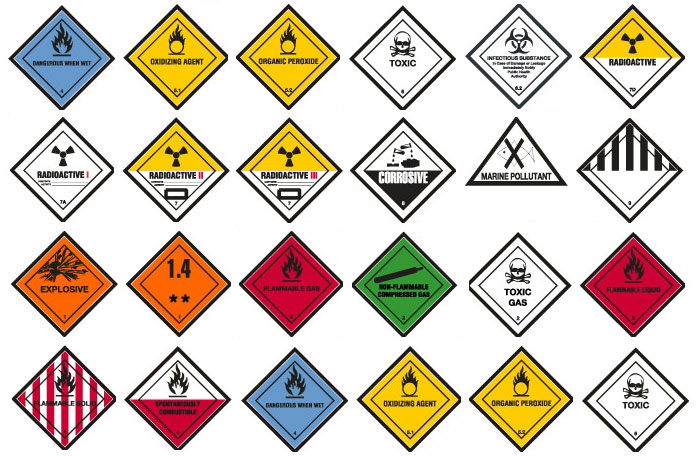To ensure the safety of maritime transportation, all DG shipments must comply with the International Maritime Dangerous Goods Code (IMDG Code), established by the International Maritime Organization (IMO). This global regulation standardizes DG classification, packaging, labeling, documentation, and stowage requirements for all ocean carriers.
1. Key Requirements of the IMDG Code
The IMDG Code covers the complete safety framework for transporting dangerous goods by sea. Core components include:
- DG Classification (Class 1–9)
- UN Number & Proper Shipping Name (PSN)
- UN-certified packaging with required performance tests
- Correct marking & labeling (Class labels, UN number, handling marks)
- Mandatory documents such as the Shipper’s Declaration for Dangerous Goods
- Segregation rules and stowage conditions on board
- Emergency response guidance (EmS & MFAG)
2. IMDG Dangerous Goods Classification (Class 1–9)
- Class 1 – Explosives
- Class 2 – Gases (flammable, non-flammable, toxic)
- Class 3 – Flammable Liquids
- Class 4 – Flammable Solids / Spontaneously Combustible / Dangerous When Wet
- Class 5 – Oxidizers & Organic Peroxides
- Class 6 – Toxic & Infectious Substances
- Class 7 – Radioactive Materials
- Class 8 – Corrosives
- Class 9 – Miscellaneous Dangerous Goods (e.g., lithium batteries, dry ice)
3. Required Documents for DG Ocean Shipment
To comply with IMDG standards, shippers must provide the following:
- MSDS / SDS (within 3 years)
- Shipper’s Declaration for Dangerous Goods
- UN-certified packaging with valid UN marking
- Photos of labels and markings on outer packaging
- UN38.3 test report (for lithium batteries)
- Commercial invoice & packing list for customs purposes
4. Importance of Professional DG Handling
DG shipping involves strict international regulations, complex documentation, carrier approvals, stowage rules, and safety considerations. A professional DG logistics provider ensures that your cargo:
- Is properly classified and documented
- Meets IMDG packaging and labeling standards
- Passes carrier acceptance and DG approval
- Is loaded and segregated safely on board
- Moves smoothly through customs and port procedures
IMDG CLASSIFICATION – 9 HAZARD CLASSES
Class 1 – Explosives
Fireworks, ammunition, detonators
Highest hazard; strict carrier restrictions
Class 2 – Gases
Compressed, liquefied, or refrigerated gases
Examples: oxygen cylinders, butane, aerosols
Includes 2.1 flammable, 2.2 non-flammable, 2.3 toxic gases
Class 3 – Flammable Liquids
Alcohols, paints, solvents, perfumes
Flash point is the key hazard indicator
Class 4 – Flammable Solids / Spontaneously Combustible / Dangerous When Wet
Sulfur, metal powders, phosphorus
⚠ Ignites through friction, air, or water exposure
Class 5 – Oxidizing Substances & Organic Peroxides
Bleaching agents, peroxides
Intensifies combustion; cannot mix with Class 3
Class 6 – Toxic & Infectious Substances
Toxic chemicals, medical samples
Strict packaging & isolation required
Class 7 – Radioactive Materials
Medical isotopes, research materials
Highly controlled; limited carriers available
Class 8 – Corrosive Substances
Acids, alkalis, battery fluid
High leakage risk; requires corrosion-resistant packaging
Class 9 – Miscellaneous Dangerous Goods
Lithium batteries, magnetized materials, dry ice
One of the most common DG categories in ocean freight
You can contact us to get more information of DG through below hot line.


